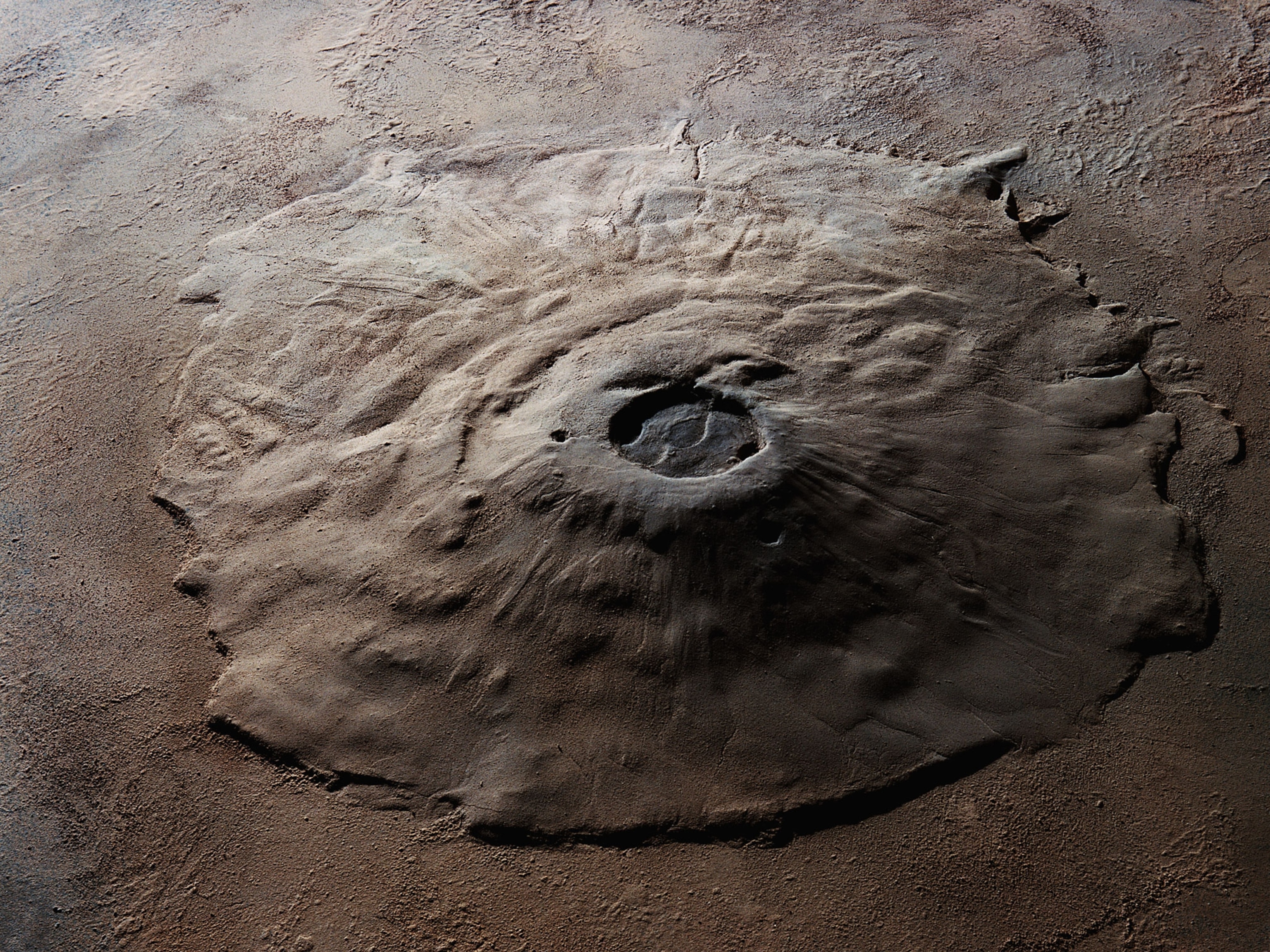
New Biggest Volcano in the Solar System?
Mars's Tharsis Rise—not Olympus Mons—should hold title, study suggests.
As wide as the state of Arizona, Olympus Mons on Mars has long held the title of biggest volcano in the solar system. But if a new theory proves true, Olympus is about to be cast down.
In a recent paper, a team of geologists suggests that Olympus—along with the neighboring volcanoes Arsia, Pavonis, and Ascraeus—is just part of a much larger volcanic structure that stretches 4,350 miles (7,000 kilometers) across the red planet.
That would mean the gigantic raised plateau, known as Tharsis Rise, is the new volcanic record holder, the study authors say.
"If we look at it at this bigger scale, one can think of Olympus as a small parasitic cone that is part of Tharsis, just like all the other smaller volcanoes on Tharsis," said study co-author Andrea Borgia, a visiting professor at The Open University in the U.K.
Mars Volcano Like a Big Mount Etna?
Using mathematical models, Borgia and co-author John Murray found that Tharsis Rise shares a lot of the same physical characteristics with one of Earth's best studied and most active volcanoes, Mount Etna in Sicily.
(See "Italy's Etna First Active Volcano to Get 'CT Scan.'")
Geologists classify Etna as a spreading volcano. This type of peak is built on a relatively weak rock layer, so that the erupting lava spreads out as the volcano builds mass and becomes heavier.
"It's like if you build a pile of crystalline sugar on a table. The pile remains stable through time," Borgia said. "However, if you build the same sugar pile on a layer of honey, the pile will spread laterally, collapsing at the center."
Based on the models, Borgia thinks Tharsis Rise is simply a scaled-up version of Etna.
For example, Etna hosts smaller, so-called parasitic cones, which form when lava escapes from fractures other than the central volcanic vent. According to the study authors, Olympus Mons and the other three nearby volcanoes on Tharsis Rise could be similar features.
(Related: "Mars Volcanoes May Re-Erupt, Hawaii Comparison Shows.")
"Small or large is not important. To have a volcano you need magma to be erupted through a crater and an edifice built by the accumulation of the erupted products," Borgia said.
"Tharsis Rise is just a really big volcanic edifice."
Hoping for a Field Trip
Proving the new theory may take some time, Borgia added, since getting the concrete truth may ultimately require either robotic or human explorers to be sent to this region of Mars.
Although the twin Mars rovers Spirit and Opportunity are in Mars's equatorial region, neither rover is near Tharsis. And the four candidate landing sites for NASA's Mars Science Laboratory, slated to launch late next year, aren't close by either.
"Doing detailed field geology would be a very important step toward the demonstration of this thesis," Borgia said.
"If they would allow me, I would go there right now!"
The Tharsis volcano research was published in February in a Geological Society of America Special Paper.





